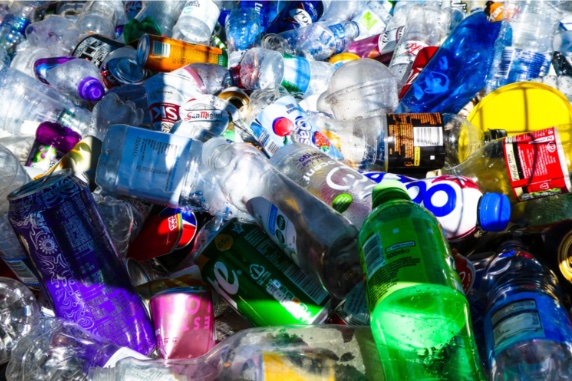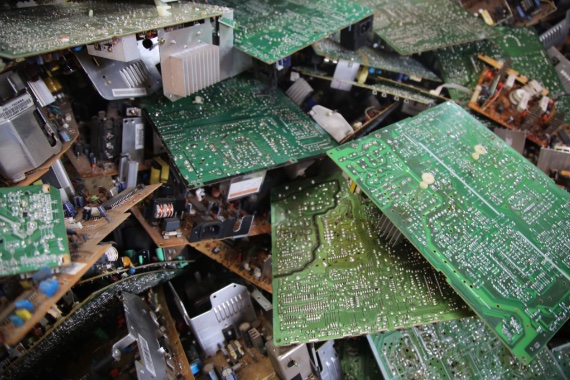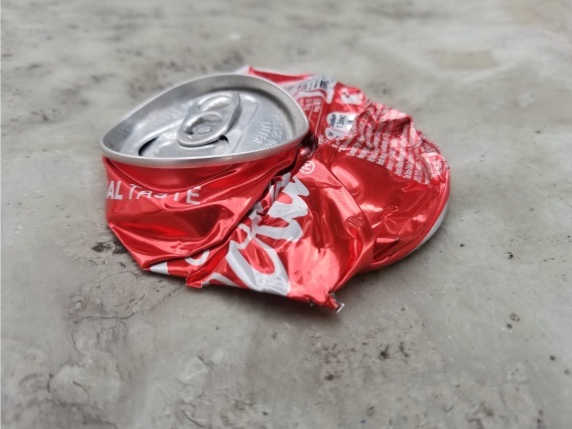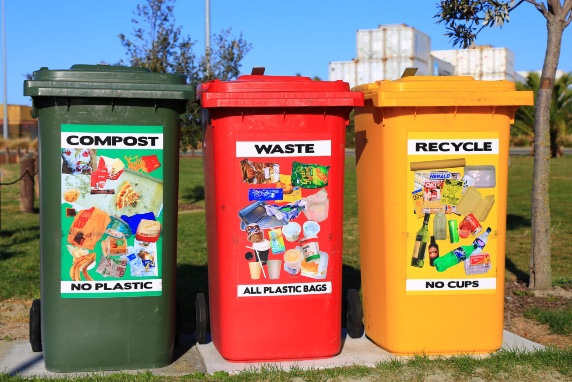Nowadays, only the very elderly will remember a time when there were no single-use plastics. Food was bought fresh and wrapped in waxed or brown paper. Paper was consumed, but newspapers were reused for wrapping sandwiches or lighting fires. Glass bottles were returned for refilling. Then came the throwaway society, with its convenient advances in non-returnable bottles and disposable packaging. But today the world generates over 3.5 million tons of garbage a day, 10 times more than a century ago, while the population has grown less than five times; by the end of the century, the rate of waste production will have tripled. It is clear that we need to recycle, a practice that began to take root in an organised way at the end of the 19th century. But beyond the obvious, it is perhaps less clear what role recycling plays on other environmental fronts: does it help mitigate climate change? To what extent is it a sustainable practice?
While we may think of the recycling of waste materials as a recent practice, linked to modern environmental concerns, in reality waste has historically been a useful resource motivated by the scarcity of raw materials. Given that in days gone by rubbish was restricted to little more than food scraps, there wasn’t much to reuse. But there were two things: paper and metals. The latter were melted down to make new utensils, while paper had been recycled in the East since at least medieval times. In the 17th century, this began to be done in Europe and the USA too, where old rags of cloth were used to make new paper.

Industrialisation gave recycling a boost, and in 1874 the first organised selective waste separation programme was launched in Baltimore, the forerunner of what we know today. The scarcity of materials during the two world wars encouraged the use of waste. In 1970, with the celebration of the first Earth Day on 22 April—inspired by a major oil spill off the coast of California the previous year—recycling became a global initiative under the emblem of the three arrows forming a triangle, representing the three R’s: reduce, reuse, recycle.
It was also around this time that disposable plastics were beginning to take off. The first polymers of this type had been invented in the 19th century, and throughout the 20th century their use spread to countless other applications. By the 1950s, disposable products—paper plates and cups, aluminium foil trays and plastic cutlery—were being advertised as a labour-saving breakthrough in the home, and in the 1970s, single-use plastic shopping bags became widespread. The throwaway lifestyle was triumphing. But at the same time there was growing awareness of the pollution caused by plastics, which are almost indestructible in nature. The first mechanical plastic recycling plant did not open until 1972, in Pennsylvania.
Plastics, the unresolved issue
Today, recycling is widespread throughout the world. Paper, metal and glass are recycled in considerable proportions; paper has a recycling rate of 68% in the USA (91% for corrugated cardboard) and accounts for half the weight of all recycled materials, according to the World Economic Forum (WEF). Glass falls short of these rates, with only one third of all glass being recycled. The advantage of aluminium and glass, unlike plastic, is that they can be recycled indefinitely to create new products without degradation of quality or purity. On the other hand, the fastest growing category of waste, according to the WEF, is electronic waste or e-waste, which discharges numerous pollutants into the environment and of which only 17% is currently recycled. Another often forgotten category is food, despite the fact that it represents the largest amount of waste in the world. Food can be recycled through composting, but globally 40% of what is produced is wasted, and this waste generates 10% of global greenhouse gas (GHG) emissions.

The great unresolved issue is undoubtedly plastic, the recycling of which remains a very small minority. Every year the world generates 400 million tonnes of plastic waste, twice as much as two decades ago; and although 15% is collected, according to the OECD only 9% ends up recycled, as not all plastics are recyclable and sometimes even those that are not are labelled as such. For example, according to Greenpeace, in the US seven types of plastic are labelled as recyclable, but only two of them, PET and HDPE, actually are. The rest of the plastic that is not recycled ends up in landfills (50%), incinerated (19%) or dumped directly into the environment (22%), but these are global figures: while in rich countries the vast majority of what is not recycled accumulates in landfills, in emerging and developing countries the proportion that ends up fouling the natural environment is equal or greater.
As a result, only 6% of total plastic production comes from recycled material, a proportion that has remained constant because, while the quantity has quadrupled over the last century, so has the total consumption of plastics. Unlike glass or aluminium, recycled plastic degrades and is not used to make equivalent products, but different ones that often end up in the trash, so there is still no real circularity. Moreover, much of the plastic discarded in rich countries is exported to Asia or Africa for recycling, but is never recycled. In terms of GHGs, the OECD estimates that plastics are responsible for 3.4% of global emissions.
The carbon footprint of recycling
But what does recycling contribute in terms of GHGs? Producing metal or glass from recycling is cheaper and uses much less energy than manufacturing from raw materials, leading to reduced emissions. The US Environmental Protection Agency (EPA) estimates that making a can from recycled aluminium saves 95% of the energy needed to make it from virgin material, 75% for steel, 40% for paper and 23% for glass.

However, the situation is different for plastic: although the EPA claims that manufacturing from recycled plastic saves a third of the energy of new material, according to the WEF “in many cases, plastic recycling is more costly and energy-intensive than creating plastic from raw materials, contributing to the low recycling rates.” This is because the recycling process involves several steps to extract dyes, fillers and other additives, which is not the case for aluminium or glass. Paradoxically, while recycling plastic saves emissions compared to incinerating it, it generates emissions that do not occur if it is not recycled.
Another approach is to consider how much GHG emissions our recycling activity saves as consumers. And here, unfortunately, the figures are not impressive. In 2017, a study by Lund University (Sweden) compared the GHG emission savings of different individual actions, separating them into high, moderate and low impact. The results reveal that recycling has only a moderate impact; its annual emissions savings are five times less than using a more efficient car, or equivalent to washing clothes in cold water or hanging them to dry instead of using a tumble dryer. Some experts go so far as to consider that recycling is not among the highest priority measures against climate change, or that the overemphasis on plastic pollution distracts from other, much more pressing climate actions.
The flip side of recycling
So while greater recycling will continue to be essential to tackle pollution, conserve resources and reduce the extraction and use of fossil fuels, experts warn against thinking of recycling as the main contribution to our consumption habits in tackling the climate crisis: “Consumers are comfortable using a larger amount of a resource when recycling is an option for its disposal,” says the WEF. An investigation by US public media NPR and PBS found that oil majors have been encouraging recycling, even if it never happens, in order to put the problem of plastic pollution out of people’s minds—something that has been labelled as greenwashing.
Measures such as a ban on single-use plastics are now proliferating, and experts are calling for improved efficiency in recycling systems. But even if all current industry and government commitments are met, the non-governmental organisation The Pew Charitable Trusts estimates that by 2040 the annual volume of plastic discharged into the oceans will have been reduced by only 7%. Nor is shifting to biodegradable plastics the solution; one study found that bags labelled as such could still be used after three years in the environment, compounded by the problem of generating polluting microplastics.
Numerous research projects are looking at alternatives to plastic, including chemical recycling to convert it into fuel. But experts insist on emphasising the other two “R’s”, reduce and reuse, plus one more: refuse, or reject, plastic and other disposable materials as far as possible (see box), as well as consuming responsibly and buying only the food we are really going to consume. Only a combination of all of these will allow us to go where recycling alone cannot.
From two kilos of rubbish a day to a quarter of a litre a year
Not all humans produce the same amount of waste; obviously, it depends on income levels, both ours and our country’s, but cultural and organisational factors also play a role: Japan produces a third less waste per person than the US, despite similar income levels. According to the EPA, each American generates an average of just over 2 kilos of solid waste per day. Interestingly, the largest proportion of this is paper, 23%, followed by food waste, 21%. Plastics make up 12%, metals almost 9% and glass 4%.
In several countries there are waste management charges, but it is natural to wonder whether in many cases this is not just another example of greenwashing, a pretext for charging more taxes; for example, in Spain these fees are applied in many towns, but they are either fixed or calculated by parameters such as the size of the house, the area in which it is located or something as arbitrary as water consumption. This does not encourage the generation of less waste, nor does it reward those who do so.

Reducing and reusing are measures that have a greater impact on climate change than recycling, which perpetuates consumption and the endless increase in waste. Credit: Nareeta Martin
Many experts favour reducing and reusing as measures that have a greater impact on climate change than recycling, which perpetuates consumption and the endless increase in waste. This is why, among the many current environmental initiatives, a “zero waste” movement is growing. Some of its participants have reached the incredible goal of limiting a year’s worth of non-recyclable and non-compostable waste to what fits in a half-pint jar. One activist told National Geographic that she also saves $5,000 a year by buying fresh food in bulk and making her own cleaners and deodorants.
All this may seem too extreme and radical, especially if this self-production is wrapped in a chemophobic discourse that doesn’t correspond to scientific reality. But for those who want to take their first steps towards zero waste, the most immediate measures are obvious, such as switching to reusable bags, bottles and packaging, or going back to cloth tissues and towels instead of wipes. Today there are also a multitude of sources and resources, from blogs to a growing number of shops that are implementing this philosophy. And of course, there are still our seniors to teach us what it was like to live without using and throwing away.
Comments on this publication